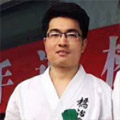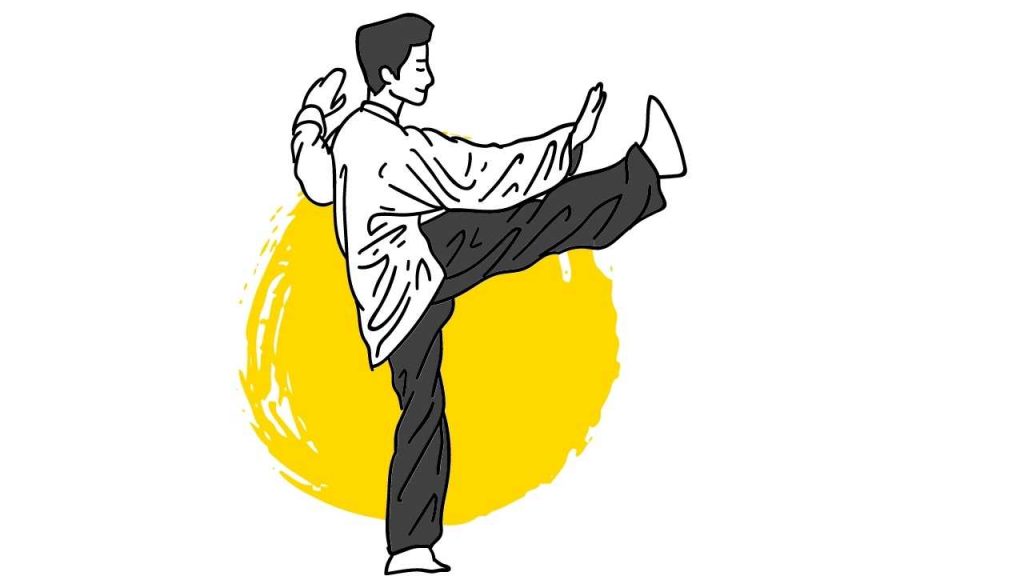The history of Wing Chun King Fu is a fascinating one surrounded by myth and legend. This ancient Chinese martial art has become renowned for its unique principles and efficiency of movement.
But where exactly did it come from and how did it develop into the incredible martial art that we know today? Well, that’s what we’re here to find out. Read on to learn the history of Wing Chun!
Table of Contents
Who Invented Wing Chun?
The story of Wing Chun starts with a remarkable woman called Ng Mui. She was one of the Five Elders who managed to survive the destruction of the Shaolin Temple and Mui would go on to spread the word of her new martial art.
This style was designed to be efficient and effective. The main aim was to give a fighting chance to combatants who were physically weaker and smaller. Especially when facing off against a powerful enemy.
While many martial arts have practical names (Karate loosely translates to “empty hand), Wing Chun translates roughly as either “eternal spring” or “song of spring.” So why does it have such a beautiful name? That’s because it’s named after a person.
Although Wing Chun founder Ng Mui popularized this fighting technique during the Qing Dynasty, Wing Chun Kung Fu is named after a young girl who was a student of Ng Mui.
Mui was one of the most renowned and respected fighters in the Shaolin temple, and she wanted to develop a new fighting style that focused less on the use of force.
With all the knowledge she gained from studying martial arts in the Shaolin Temple and with experience in armed and unarmed combat, Ng Mui developed a new style. At the time of its creation, it had no name, until she later named it after Wing Chun.
How Did Wing Chun Originate?
There are many stories about how Wing Chun originated, but here is one of the most believed and passed on.
The Manchurian army invaded and destroyed the Shaolin Temple, where Ng Mui was residing. She and a small group of other monks were able to flee the onslaught. During her time as a refugee in the White Crane Temple, she observed a conflict between a snake and a crane.
This inspired her to develop a new fighting system that would combine the strengths of both animals: speed, agility, strength, and control. It is an effective closed-range combat system designed to allow weaker fighters to overcome powerful foes using strategy and technique instead of relying on brute force.
Another similar story is that Ng Mui created this martial art during her time in the temple. But it was only taught to others after escaping the attack of the Manchurian army. There is also a conflict over how she got her inspiration.
Some say it was not a snake and a crane, but the idea came from a fight she witnessed between a stroke and a large rodent, as described in other legends. Others say that the animal inspiration may have just been a complete myth.
Regardless of the inspiration, Ng Mui developed this fighting style not just because she was a woman who wanted to find a way to overpower stronger rivals in battle. It was mainly because she wanted to overcome the limitations of Sui Lam Kung Fu, the martial art she learned in the Shaolin Temple.
Many wonders, is Wing Chun Kung Fu? They are related but Wing Chun is seen as a style of Kung Fu and the two differ in many important ways. The fighting style she learned in the temple required years of dedication and practice.
It is said that many students spend years perfecting a single technique before moving on to the next one. Ng Mui’s fighting style removed these restrictions and allowed for a more fluid and adaptable approach to combat.
In short, she developed a unique and effective fighting style that could be learned in a short amount of time. However, it does take years of training to master Wing Chun Kung Fu. The history of how exactly how Wing Chun originated is unclear, but we know it was Ng Mui who created it.
The Spread of Wing Chun
Ng Mui is said to have passed on her knowledge to a young girl named Yim Wing Chun, whom she met during her time as a refugee after the destruction of the Shaolin Temple.
She taught her the martial art to defend herself against an aggressive suitor or a local warlord, as stated in some legends. There is some controversy over who it was, but Yim Wing Chun’s bravery and success in this encounter led to the style being named after her by Ng Mui.
Over time, Wing Chun has been passed down through various lineages and generations. It first started with Yim Wing Chun, who taught her husband, who later taught his brother.
Wing Chun wasn’t Ng Mui’s only student, as there were others as well who became teachers and passed on this fighting style.
Other practitioners contributed their insights and refinements to the art. Notably, the martial artist Ip Man played a pivotal role in promoting and popularizing Wing Chun in the 20th century. This eventually led to its global recognition and practice today.
Ip Man learned Wing Chun from Chan Wah-shun, one of the top students of Leung Bik, the son of Leung Jan, a famous Wing Chun master. They are from the Yim Wing Chun family.
Ip Man was a skilled martial artist who further developed his talents and knowledge, eventually becoming a renowned Wing Chun practitioner and teacher.
In the mid-20th century, Ip Man relocated to Hong Kong, where he began teaching Wing Chun openly. He accepted students from different backgrounds, including Bruce Lee, who went on to become one of the most iconic martial artists in history. Bruce Lee’s global fame contributed significantly to the popularity and recognition of Wing Chun.
Ip Man’s sons and other disciples also played crucial roles in spreading Wing Chun. They established their own schools and taught a new generation of individuals, both in Hong Kong and abroad. These instructors and their students further disseminated Wing Chun through demonstrations, seminars, and the establishment of Wing Chun schools in different parts of the world.
Today, Wing Chun is practiced worldwide, with dedicated practitioners and schools in many countries. Its reputation as an effective martial art for self-defense and its inclusion in popular culture, movies, and media have further contributed to its global spread and popularity.
The Evolution of Wing Chun Kung Fu
This martial art came into existence 300 years ago, and as time went by, different fighters who mastered it injected some of their own teachings. Due to this, Wing Chun has many branches.
It was not evident when it originally began to evolve. However, if we were to look at the tree of Wing Chun, it is clear that it began with the founder, Ng Mui, who passed it on to Yim Wing Chun and other students. They mastered this style and taught it to their disciples.
Somewhere along the branches of this tree, Wing Chun began to grow. Individuals with one or more styles are no doubt the ones who introduced some different techniques, like Ip Man.
No matter how much Wing Chun has evolved, the basic training of this martial art is still in effect today. With that in mind, let’s check out some of the basic techniques and practices used in Wing Chun.
Various Forms
Wing Chun comprises different forms, which are a series of movements that help develop coordination, structure, and muscle memory. These forms are essential to building a strong foundation.
Footwork
Every fighting style has footwork, and Wing Chun is no exception. The basics of footwork emphasize stability, movement, and the ability to maintain balance while maneuvering. All of these drills focus on improving reaction time.
Wooden Dummy
The wooden dummy is a unique training tool used in Wing Chun that helps practitioners develop precision, timing, and power in their strikes. It also allows for the simulation of real-life combat scenarios, helping to prepare students for self-defense situations.
Attack and Defense Techniques
Bruce Lee demonstrated the quick, precise punches that are a hallmark of Wing Chun in his various films. A few common punching techniques are:
- The straight punch, is also known as a jab in boxing.
- Chain punching
- Palm strike
Apart from attack, Wing Chun also teaches blocking and trapping. Trapping does not mean grappling the opponent. It involves controlling and immobilizing an opponent’s limbs.
Sparring
No fighting style is complete without the practical application of the techniques learned, and Wing Chun is no exception. Sparring is an essential part of training, as it allows practitioners to test their skills against a resisting opponent in a controlled environment. This helps to develop timing, distance, and the ability to apply techniques under pressure.
Final Thoughts
Wing Chun has an amazing history that is filled with intrigue. While the exact inspiration can be disputed, there is no doubt that Ng Mui, the creator of Wing Chun, was a remarkable woman who inspired countless generations of martial artists.
She developed a martial art that is one of the most unique in the world. If you’re interested in practicing Wing Chun, then make sure to check out if there is a local school near you.


